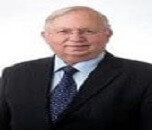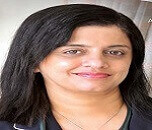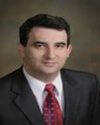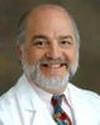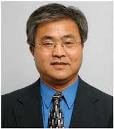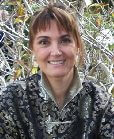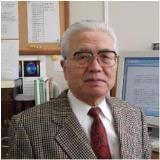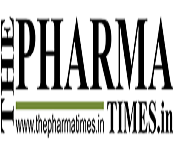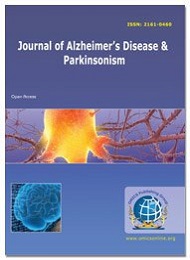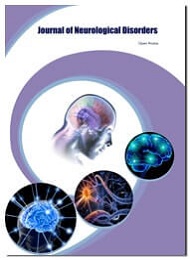Theme: Innovative approaches to defeat Alzheimers Disease and Dementia
Alzheimers Congress 2019
Conference Series LLC Ltd respects each one of the individuals from wherever all through the world to go to "11th World Congress on Alzheimer's Disease and Dementia" March 20-21, 2019 at Sydney, Australia which joins actuate keynote presentations, Oral talks, Poster presentations, and Exhibitions.
Dementia, including Alzheimer's disease, is one of the best overall general prosperity challenges facing our period. Around the globe, no under 44 million people are living with dementia this number is depended upon to two overlaps by 2030 and more than triple by 2050 to 115 million. A critical piece of the development will be in making countries like Western Europe and North America. Authoritatively 62% of people with dementia live in making countries. Today, more than 35 million people general directly live with the condition. This number is depended upon to twofold by 2030 and more than triple by 2050 to 115 million. No drugs available to direct or stop the cerebrum hurt caused by Alzheimer's disease, a couple of pharmaceuticals can quickly help upgrade the symptoms of dementia for a couple of individuals. In two decades, it is assessed that 1.4 million Canadians will have dementia, costing the economy almost $300 billion consistently. Comprehensive, dementia cost $600 billion a year
Importance and Scope:
Dementia is a general term that depicts a social affair of reactions, for instance, loss of memory, judgment, tongue, complex motor capacities, and other insightful limit caused by the enduring mischief or going of the cerebrum's nerve cells, or neurons.
Dementia, including Alzheimer's disease, is one of the best overall general prosperity challenges standing up to our period.
All around, eventual outcomes of a current meta-examination prescribe that 44 million people lived with dementia worldwide in 2010, with numbers foreseen that would twofold at standard interims, to 65.7 million of each 2030 and 115.4 million out of 2050. In 2010, 58 percent shockingly with dementia lived in countries with low or focus compensation, with this degree predicted to rise to 63 percent in 2030 and 71 percent in 2050. This number is depended upon to twofold by 2030 and more than triple by 2050 to 115 million.
In the United States alone, experts gage that upwards of five million people age 65 and more settled experience the evil impacts of Alzheimer's affliction The AD advertise has an absence of helpful alternatives. Which classes of medication overwhelm the market?
Why to attend???
11th World Congress on Alzheimer's Disease and Dementia are a one of a kind gathering to unite overall recognized scholastics in the field of neuroscience and neurology, Brain specialists, general wellbeing experts, researchers, scholastic researchers, industry analysts, researchers to trade about best in class research and advances.
Point of this gathering is fortifying new thoughts for treatment that will be gainful over the range of Neuroscience
A Unique Opportunity for Advertisers and Sponsors at this International occasion:
For more points of interest please visit- http://alzheimersdementia.neurologyconference.com/
Target Audience:
- Neurologists and Directors
- Physicians.
- Neuroscientists
- Specialists
- Researchers
- Healthcare professionals
- Professors
- Industrial Experts
- Neurosurgeons
- Psychiatrist
- Nutritional Scientists
- Lecturers and Students from Academia in the study of Dementia
- Students from Academia in the research of Neurology
ConferenceSeries LLC Ltd invites every one throughout the world to attend the “11th World Congress on Alzheimer's Disease and Dementia” during March 20-21, 2019 at Sydney, Australia which includes Keynote speeches, Oral talks, Poster presentations, and Exhibitions.
Alzheimer's disease (AD), also mentioned as Alzheimer's, is an enduring neurodegenerative disease that usually starts slowly and worsens over time. The most common early symptom of Alzheimer's is difficulty memorizing newly learned information because Alzheimer's changes naturally initiate in the part of the brain that affects learning. As Alzheimer's spreads through the brain, it leads to increasingly severe symptoms, including confusion, mood and behavior changes; deepening misperception about events, time and place; unfounded suspicions about family, friends and professional caregivers; more serious memory loss and behavior changes; and difficulty speaking, swallowing and walking.
Around the world, no less than 44 million individuals are living with dementia this number is believed to get double by 2030 and more than triple by 2050 to 115 million. A significant part of the expansion will be in creating nations like Western Europe and North America. Officially 62% of individuals with dementia live in creating nations. Today, more than 35 million individuals overall, are currently living with this condition.
Alzheimer’s Disease is complex, and it is doubtful that any one drug or other intervention can effectively treat it. Alzheimer’s has no current cure, but treatments for symptoms are available and research continues. In two decades, it is estimated that 1.4 million Canadians will have dementia, costing the economy nearly $300 billion every year. All inclusive, dementia cost $600 billion a year.
The scope of the Conference
Alzheimer’s Congress 2019 provides a great platform by gathering eminent professors, researchers, students, and delegates to exchange new ideas. The conference will cover a wide range of topics and allow participants to discuss the management of diseases. Best poster presenters will be judged and awarded during the conference. To encourage broad participation from all over the world Conference Series LLC Ltd is offering reduced registration fee for students.
Conference Highlights
- 200+ Participation (50% Academic: 30% Hospitals: 20% Industry)
- 9+ Keynote Speakers
- 30+ Plenary Speakers
- 3+ Exhibitors
- 14 Innovative Educational Sessions
- B2B Meetings
-
Exhibition
Conference Opportunities
For Researchers and Faculty Members:
- Speaker Presentations
- Poster Display
- Symposium hosting (4-5 member team)
- Workshop organizing
For Universities, Associations & Societies:
- Association Partnering
- Collaboration proposals
- Academic Partnering
- Group Participation
For Students and Research Scholars:
- Poster Competition (Winner will get Best Poster Award)
- Young Researcher Forum (YRF Award to the best presenter)
- Student Attendee
- Group registrations
For Business Delegates:
- Speaker Presentations
- Symposium hosting
- Networking opportunities
For Product Manufacturers:
- Exhibitor and Vendor Booths
- Sponsorships opportunities
- Marketing and Networking with clients
- Workshop organizing
Why you should attend?
Alzheimer’s Congress 2019 will give a chance to all partners chipping away at Alzheimer's infection and Dementia to discuss their work. Alzheimer's Congress 2019 will assemble prestigious speakers, important examiners, specialists, neurologists and Dementia analysts from both scholarly community and social insurance industry will consolidate to talk about their perspectives and research. The gathering will be involved sessions by world-class specialists in the field of neurology. In Alzheimer’s Congress 2019, global symposiums, B2B gatherings, worldwide workshops will likewise be sorted out to talk about the particular points in the field of Alzheimer's Disease and Dementia and Neurology.
Conference Series LLC Ltd invites all the participants from all over the world to attend 11th World Congress on Alzheimer’s Disease and Dementia which will be held during March 20-21, 2019 at Sydney, Australia. The conference mainly focuses on “Innovative approaches to defeat Alzheimer’s Disease and Dementia”.
Track 1: Alzheimer’s disease | Dementia Conferences | Alzheimer’s Conferences | Neurology Conferences
Alzheimer's ailment is a neurological cerebrum issue. Alzheimer's sickness is the most widely recognized type of dementia, a gathering of scatters that disables mental working. Alzheimer's is dynamic and irreversible. Memory loss is one of the most punctual indications, alongside a progressive decay of other scholarly and thinking capacities, called intellectual capacities, and changes in identity or conduct.
Track 2: Causes of Dementia and Prevention | Dementia Congress | Neurology Conferences
Researchers for the most part concur that there is probably not going to be a Single clear "Cause" of Alzheimer's. It is more probable the consequence of a mix of between related elements, including hereditary variables, which are passed along family lines of legacy, and ecological impacts, which extend from past make a beeline for instructive level to one's encounters ahead of schedule in life. A developing assemblage of research is likewise distinguishing different way of life elements, for example, dietary propensities, hypertension and elevated cholesterol, which may impact one's danger of Alzheimer's disease. Alzheimer's creates because of a perplexing course of natural procedures that happen over numerous years inside the cerebrum. Drugs Used to treat individuals with Alzheimer's fall into two general classes medications to treat subjective manifestations, for example, memory issues and other mental shortfalls of Alzheimer's, and medications to treat behavioral side effects that don't react to non-pharmacological behavioral-administration approaches. These medications may incorporate an assortment of sorts of medications comprehensively classified as anti-agitation drugs.
Track 3: Vascular Dementia | Vascular Dementia Conferences | Alzheimer’s Meetings | Neurology Conferences
A decline in a man's mental limits and scholarly capacities that is sufficiently awesome to influence the individual's ordinary day by day working. Dementia is a Syndrome prone to be the outcome of sores of the cerebrum, Vascular in cause, irrespective of their ischemic, haemorrhagic or hypoxic nature. Vascular dementia is more typical in men than in ladies (perhaps in light of the fact that men are more probable than ladies to experience the ill effects of (Strokes). Vascular dementia turns out to be progressively common as individuals become more established. The quantity of individuals influenced by vascular dementia rises significantly amid and after the Sixth decade. Vascular dementia for the most part happens at a younger age than Alzheimer’s disease. Vascular dementia ordinarily exhibits in an intense and stepwise mold meaning a "stage" is lost after every occasion.
Track 4: Causes and Prevention of Traumatic brain injury | Alzheimer’s Conferences | Neurology Conferences
Traumatic brain injury happens when a sudden injury harms the mind causing dying, brushing, or tearing of nerves. Reasons for TBI Includes Auto, bike or bike crashes, falls, viciousness, gun shots, abuse, explosive blasts, military personnel. Indications incorporate into TBI are unconsciousness, extreme cerebral pain, rehashed sickness and spewing, unsteadiness, seizures, shortcoming, numbness in arms and legs, dilated understudies of the eye, slurred discourse, confusion, agitation, memory or focus issues, amnesia about occasions preceding damage. Avoidance of TBI includes, always wearing a safety belt, utilize legitimate restrictions for children, never drive affected by liquor or medications, and wear a protective cap when riding a bike, skateboard, motorcycle or ATV. Stay away from falls by keeping up a protected domain.
Track 5: Lewy body Dementia | Dementia Conferences | Dementia Meetings | Neurology Conferences
Dementia with Lewy bodies (DLB) is a standout amongst the most well-known sorts of dynamic dementia. The focal element of DLB is dynamic subjective decrease, consolidated with three extra characterizing highlights: (1) articulated "vacillations" in readiness the and consideration, for example, visit tiredness, torpidity, long timeframes spent gazing into space, or scattered discourse; (2) intermittent visual visualizations; and (3) parkinsonian motor symptoms, for example, unbending nature and the loss of unconstrained development. Individuals may likewise experience the ill effects of dejection. The side effects of DLB are caused by the development of Lewy bodies – collected bits of alpha-synuclein protein — inside the cores of neurons in zones of the cerebrum that control specific parts of memory and engine control. The likeness of side effects amongst DLB and Parkinson's illness, and amongst DLB and Alzheimer's infection, can frequently make it troublesome for a specialist to make a conclusive analysis. What's more, Lewy bodies are regularly additionally found in the brains of individuals with Parkinson's and Alzheimer's Disease. These discoveries propose that either DLB is identified with these different reasons for dementia or that an individual can have both maladies in the meantime. DLB ordinarily happens sporadically, in individuals with no known family history of the infection. In any case, uncommon familial cases have at times been accounted for.
Track 6: Managing Dementia | Alzheimer’s Conferences | Neuroimaging Conferences | Neuroscience Conferences
Dementia is the term used to depict the manifestations of various conditions that influencing the mind. The usually observed condition is Alzheimer's, and different incorporates Parkinson's infection. Manifestations seen at early stages are identity changes, withdrawal, memory loss, confusion and lack of concern. Early determination assists with giving early treatment, support and arranging. Medicines may help with a few side effects of dementia, yet no changeless cure.
Dominant part of individuals with dementia is above age 65, the condition is not typical for all more established individuals. The event of dementia gets high with age, yet it's not given that a more established individual will create it. While just 1-in-4 individuals with Alzheimer's disease or Dementia has been analysed. Barely any more things we have to think about vascular dementia, Dementia with lewy bodies, Fronto-temporal dementia, Rarer reasons for dementia, Creutzfeldt-Jakob illness, HIV-related subjective disability, Mild psychological impedance.
Track 7: Diagnosis and Symptoms | Alzheimer’s Conferences | Dementia Meetings | Neurology Conferences
Alzheimer's sickness is that the commonest type of dementia, it is a genuine mind issue and it impacts everyday living through memory loss and intellectual changes. In spite of the fact that not all memory loss demonstrates Alzheimer's disease, one out of ten individuals more than 65 years old, and over portion of those more than 85 have Alzheimer's infection. Presently, 26 million individuals worldwide have this dementia, and more than 15 million Americans will be influenced by the year 2050.
There is no single test that can demonstrate whether a man has Alzheimer's. While doctors can quite often decide whether a man has dementia, it might be hard to decide the correct cause. Diagnosing Alzheimer's requires cautious therapeutic assessment, including restorative history, mental status testing, physical and neurological exam, blood tests and mind imaging.
Manifestations of Alzheimer's illness as a rule grow gradually and continuously exacerbate after some time, advancing from gentle neglect to across the board cerebrum hindrance. Compound and auxiliary changes in the cerebrum gradually annihilate the capacity to make, recollect, learn, reason, and identify with others. As basic cells pass on, intense identity misfortune happens and body frameworks come up short.
This session incorporates Biomarkers, Novel methodologies in biomarkers, living with Alzheimer's infection, Patients mental changes, Neuropathology and Neuropsychology, Early discovery potential outcomes, different finding methodology, new techniques in analysis, normal mind maturing.
Track 8: Imaging Techniques | Dementia Conferences | Alzheimer’s Conferences | Neurology Conferences
Scientists look at the brain’s grey matter when examining about Alzheimer's ailment. A new report, found that worsening white issue in the mind could be an early pointer of infection. An investigation was distributed in Radiology which infers that white tissue assumes a critical part in how the ailment strikes and spreads. Abnormal stores of proteins form amyloid plaques and tau tangles everywhere throughout the mind in Alzheimer's illness. It can likewise be portrayed by shrinkage of cerebrum tissues because of neurons loss.
This session incorporates Amyloid and Tau imaging, Imaging animal models, Imaging and hereditary qualities, New strategies in imaging, Structural and practical MRI, Positron emanation tomography, MR spectroscopy, EEG and cerebrum mapping, SPECT imaging, Imaging relates of clinical, intellectual and biomarker factors.
Track 9: Pathophysiology and Disease Mechanisms | Dementia Congress | Neurology Conferences
Alzheimer's illness is a dynamic dementia with loss of neurons and the nearness of two fundamental infinitesimal neuropathological trademarks: extracellular amyloid plaques and intracellular neurofibrillary tangles. Early onset AD, an uncommon familial shape, is caused because of change of one out of three qualities: (amyloid antecedent protein), (presenilin 2) or (presenilin 1). Sporadic shape happens more often than not after age of 65 and records for most cases; it in all likelihood comes about because of a blend of hereditary and impact of condition. Affirmed chance elements for sporadic AD are age and the nearness of the E4 allele of (Apo lipoprotein E). Amyloid plaques contain for the most part of the neurotoxic peptide amyloid (Aβ, Abeta), cut consecutively from a bigger antecedent protein (APP) by two chemicals: β-secretase (additionally called BACE1) and γ-secretase (involving four proteins, presenilin is one of them). On the off chance that APP is first separated by the chemical α-secretase as opposed to β-secretase then Aβ is not framed. Neurofibrillary tangles contain for the most part of the protein tau which ties with microtubules, which encouraging the neuronal transport framework. Tau uncoupling from microtubules and conglomeration into tangles hinders transport and results in dismantling of microtubule. Phosphorylation of tau may have an essential part in this. Specific defencelessness of neuronal frameworks, for example, the cholinergic, serotonergic, and noradrenergic and glutamatergic frameworks shape the premise of current objective pharmacological treatment.
This session incorporates Aging, Prions and Alzheimer's ailment, Cellular flagging and cell to cell transmission, Oxidative harm and mitochondrial brokenness, Autoimmunity in Alzheimer's, Blood-cerebrum hindrance and transport, Neurogenesis and undifferentiated organisms and Cell passing.
Track 10: Geriatric and Cognitive Disorder | Alzheimer's Conferences | Dementia Conferences | Neurology Conferences
Geriatrics or Geriatric medication might be a forte that spotlights on social insurance of more seasoned individuals. It plans to push wellbeing by forestalling and treating infections and incapacities in more established grown-ups. there's no set age at that patients is additionally underneath the care of an expert or geriatric MD, a MD United Nations organization makes a claim to fame of the care of more seasoned individuals. Or maybe, this call is set by the individual patient's needs and in this way the accessibility of a pro. It's imperative to see the qualification between gerontology, the care of matured individuals, and geriatrics, that will be that the investigation of the maturing technique itself.
Intellectual issue square measure a class of mental state issue that principally affect learning, memory, discernment, and downside assurance, and epitomize power outage, dementia, and insanity. While uneasiness issue, inclination issue, and crazy issue can even affect mental component and memory works, the DSM-IV-TR doesn't mull over these mental element issue, since loss of intellectual capacity is not the essential (causal) side effect. Causes change between the different sorts of clutters however most incorporate harm to the memory parts of the cerebrum. Medications depend on however the turmoil is caused. Pharmaceutical and treatments square measure the principal normal medications at the same time, for a couple of sorts of disarranges like amnesia, medicines will stifle the side effects however there is by and by no cure.
This session incorporates Neurodegenerative ailments, Geriatric crisis solution, Geriatric diagnostics, Geriatric neurology, Geriatric oncology, Geriatric psychiatry or psychogeriatric, Geriatric pharmacotherapy, Alcohol compulsion and emotional well-being, Nutritional lack, Preventions: Mental movement and sound way of life.
Track 11: Care Practice and Awareness | Dementia Conferences | Alzheimer’s Meetings | Neurology Conferences
People with dementia have different mental component shortages that incorporate every memory impedance, that influences the adaptability to discover new data or review data beforehand learned, and one or extra of the consequent side effects aphasia, apraxia, agnosia, or official brokenness to such an extent that the mental element deficiencies contrarily affect social or movement working with a major decrease in past abilities. Also, people with dementia regularly experience the ill effects of comorbid conditions that extra confound mind and hinder best results. Consequently, creating providing care techniques individuals with dementia is pressing, given this expanding pervasiveness and thusly the related weight that dementia places not just on the people, however on the parental figures, relations, and in this way the assets of the medicinal services framework. Traditional perspectives bearing on geriatric nursing regularly paint a picture of the care as being moderate paced certain and less requesting than intense care. Notwithstanding, care of the matured, and especially those with dementia, is normally muddled, capricious, and insecure.
This session incorporates Education and preparing of therapeutic experts, Care and personal satisfaction, Person focused care, Cognitive preparing, Support and preparing for casual and proficient professions, Putting logical information into training, Non-pharmacological Interventions, Functional sustenance’s, Art, music and way of life.
Track 12: Current Research in Therapeutic Targets | Dementia Conferences | Alzheimer’s Conferences | Neurology Conferences
Alzheimer's disease (AD) as of now exhibits one of the greatest medicinal services issues in the created nations. There is no successful treatment equipped for backing off infection movement. As of late the fundamental concentrate of research on novel pharmacotherapies depended on the amyloidogenic speculation of AD, which places that the beta amyloid (Aβ) peptide is primarily in charge of subjective hindrance and neuronal demise. The objective of such medicines is (a) to diminish Aβ creation through the restraint of β and γ secretase chemicals and (b) to advance disintegration of existing cerebral Aβ plaques. Be that as it may, this approach has turned out to be just unobtrusively viable. Late investigations propose an option methodology fixated on the restraint of the downstream Aβ flagging, especially at the neural connection. Aβ oligomers may cause deviant N-methyl-D-aspartate receptor (NMDAR) initiation postsynaptically by shaping buildings with the phone surface prion protein (PrPC). PrPC is enhanced at the neuronal postsynaptic thickness, where it collaborates with Fyn tyrosine kinase. Fyn enactment happens when Aβ is bound to PrPC-Fyn complex. Fyn causes tyrosine phosphorylation of the NR2B subunit of metabotropic glutamate receptor 5 (mGluR5). Fyn kinase blockers masitinib and saracatinib have ended up being effective in treating AD side effects in trial mouse models of the illness.
Track 13: Animal Models and Translational Medicine | Alzheimer’s Conferences | Neuroimaging Conferences | Neuroscience Conferences
Animal models for Alzheimer's disease it is essential to consider the human phenotype and what is being displayed as far as the creature phenotype. The arbitrator, Bradley Hyman, educator of neurology at Harvard Medical School, said that creature models of Alzheimer's ailment, in view of the hereditary qualities of the sickness and the firmly related frontotemporal dementia, imitate at any rate a portion of the pathology. Specialists have been fruitful at displaying particular parts of Alzheimer's malady in the mouse (e.g., plaques, tangles). In spite of the fact that these are deficient models of the human ailment, they have been generally welcomed in the field as conceivably important models for use in sedate revelation.
Patients with Alzheimer's infection will show both amyloidopathy and tauopathy; be that as it may, researchers frequently centre, reductionist, on either in a creature display. A member included that despite the fact that the life structures in the mouse is unique in relation to the human, mutant tau mice are moderately great models in that they restate tau-subordinate neurodegeneration. This has driven various organizations to concentrate on antibodies that piece tau-subordinate neurodegeneration in these mouse models.
This session incorporates Transgenic models, Pharmacological and injury models, Natural and seminatural models, Primate models, Zebra angle models, Animal models of human intellectual maturing, Development of new creature models, Genetics of translational models, Protein-protein cooperations, Ethical issues with creature models.
Track 14: Behavioural Problems in Alzheimer’s disease | Alzheimer’s Conferences | Alzheimer's disease Events | Neurology Conferences
At the point when Alzheimer's upsets memory, dialect, considering and thinking, these impacts are alluded to as "psychological indications" of the sickness. The expression "behavioural and psychiatric side effects" portrays an expansive gathering of extra manifestations that jump out at any rate some degree in numerous, however in no way, shape or form all, people with Alzheimer's.
In beginning times of the illness, individuals may encounter identity changes, for example, crabbiness, uneasiness or dejection. In later stages, different manifestations may happen, including rest aggravations; disturbance (physical or verbal upheavals, general enthusiastic trouble, eagerness, pacing, destroying paper or tissues, hollering); fancies (immovably held confidence in things that are not genuine); or pipedreams (seeing, hearing or feeling things that are not there).
Track 15: Insulin Resistance on the development of Alzheimer’s disease | Dementia Conferences | Alzheimer’s Meetings | Neurology Conferences
Convincing preclinical and clinical confirmation underpins a pathophysiological association between Alzheimer's disease (AD) and diabetes. Modified digestion, aggravation, and insulin resistance are key neurotic components of the two maladies. For a long time, it was for the most part considered that the cerebrum was unfeeling to insulin; however it is presently acknowledged that this hormone has focal neuromodulatory capacities, incorporating parts in learning and memory, which are debilitated in Alzheimer's Disease. Be that as it may, up to this point, the sub-atomic components representing cerebrum insulin resistance in AD have stayed tricky. Here, we survey late proof that reveals insight into how cerebrum insulin brokenness is started at an atomic level and why anomalous insulin flagging comes full circle in synaptic disappointment and memory decay. We likewise examine the phone premise basic the gainful impacts of incitement of cerebrum insulin motioning on perception. Disclosures outlined here give pathophysiological foundation to recognizable proof of novel sub-atomic targets and for improvement of option helpful methodologies in AD.
Track 16: Parkinson's Disease Dementia | Dementia Congress | Neurology Conferences | Neurologist Conferences
Parkinson’s Disease Dementia is a type of Dementia, related to Alzheimer’s disease. It is impairment in thinking and reasoning that ultimately affects many people with Parkinson's disease. The brain changes caused by Parkinson's disease activate in a region that plays a significant role in movement. As Parkinson's brain changes gradually spread, they often initiate to affect mental functions, comprising memory and the ability to pay attention, make sound judgments and plan the steps needed to complete a task.
The key brain changes linked to Parkinson's disease and Parkinson's disease dementia are irregular microscopic deposits composed chiefly of alpha-synuclein, a protein that's found extensively in the brain but whose normal function isn't yet known. The deposits are called "Lewy bodies".
Track 17: Genetics of dementia | Dementia Conferences | Alzheimer’s Conferences | Neurology Conferences
Many individuals will be worried about whether dementia can be acquired - that is, go down from an influenced relative. Individuals with dementia may be stressed that they have acquired it and may pass it on to their youngsters. Relatives of individuals with dementia, for example, siblings and sisters, may likewise be concerned that they will probably create dementia themselves.
Qualities are the methods by which attributes are gone down through families. They can assume a part in the advancement of dementia, however their belongings are muddled and how and whether dementia is passed down - the 'examples of legacy' - change impressively. The data on these pages plots what we as of now think about the hereditary qualities of dementia and what it might mean for you.
Track 18: Frontotemporal dementia | Vascular Dementia Conferences | Alzheimer’s Meetings | Neurology Conferences
The nerve cell harm caused by frontotemporal dementia prompts loss of capacity in these mind areas, which dynamically cause weakening in conduct and identity, dialect unsettling influences, or changes in muscle or engine capacities.
There are various diverse sicknesses that reason frontotemporal degenerations. The two most conspicuous is 1) a gathering of cerebrum issue including the protein tau and 2) a gathering of mind issue including the protein called TDP43. For reasons that are not yet known, these two gatherings have an inclination for the frontal and fleeting projections that reason dementia.
Related Conferences:
11th International Conference on Vascular Dementia, February 15-16, 2019 Amsterdam, Netherlands
Related Societies:
Alzheimer's Disease Armenian Association
Ligue Nationale Alzheimer Liga
Alzheimer's Family Support Group
Market Analysis Report
Dementia is the second prominent cause of death of Australians contributing to 5.4% of all deaths in males and 10.6% of all deaths in females every year
- In 2016 dementia became the primary cause of death among Australian females, exceeding heart disease which has been the primary cause of death for both males and females since the early 20th century. Females account for 64.4% of all dementia-related deaths
- In 2018, there is an expected 425,416 Australians living with dementia (191,367 (45%) males and 234,049 (55%) females)
- Without a medical advancement, the number of people with dementia is anticipated to increase to an estimated 536,164 by 2025 and 1,100,890 by 2056
- Currently, an expected 250 people are joining the population with dementia every day. The sum of new cases of dementia is likely to increase to an estimated 318 people per day by 2025 and more than 650 people per day by 2056
- Three in 10 people over the age of 85 and almost one in 10 people over 65 have dementia
- In 2018, there is an estimated 26,443 people with younger onset dementia, estimated to rise to 29,375 people by 2025 and 42,252 people by 2056
- An average of 36 people died per day where dementia was the underlying source of death in 2016. Of the 13,126 people that lost their lives, 8,447 were female
Why Sydney
Sydney, the capital of New South Wales, Australia is known as the Harbour City. It's the largest, city with a population of around 4 million. It has an enviable reputation as one of the worlds most beautiful and lies amid a seductive intermingling of land and sea.
Sydney is a major global city and one of the most important cities for finance in the Asia-Pacific. Sydney is built around a huge harbor and hosts many tourist attractions as well as a number of beaches, bays and a couple of national parks.
Brimming with history, nature, culture, art, fashion, cuisine, design, Sydney is set next to miles of ocean coastline and sandy surf beaches. Long-term immigration has led to the city’s reputation as one of the most culturally and ethnically diverse cities in Australia and the world. The city is also home to the Sydney Opera House and the Sydney Harbour Bridge, two of the most iconic structures on this planet. Sydney's 4,757,083 residents sprawl over an area of more than 12,350km².
- The Janssen Pharmaceutical Companies of Johnson & Johnson
- Bristol-Myers Squibb
- Lundbeck
- Otsuka Pharmaceutical Companies (U.S.)
- Sanofi
- Pfizer
- AstraZeneca
- NHS
- Novartis
- Eli Lilly and Company
- Neuropathy Association
- The brain & behavior research foundation
- Alzheimer's Association
- American Academy of Neurology
- European Neurological Societies
- World Federation of Neurology
- Spanish Society of Neurology
- Major Neurological Associations in Italy
- Hilarescere Foundation in Italy
- Italian MS society in Italy
- Southern Clinical Neurological Society
- ESNR European Society of Neuroradiology
- Vision sciences society
- Dalhousie University
- Leiden University- Neither land
- Temple University USA
- University Oklahoma
- Boston Coll USA
- Florida International University
- University California – Davis
- University Sheffield
- University Manchester
- University of Nottingham
- Cardiff University
- University of Toronto – Canada
- Hospitals Associated with Neuroscience Research
Conference Highlights
- Alzheimers disease and Dementia
- Vascular Dementia
- Traumatic Brain Injury
- Dementia with Lewy Bodies
- Managing Dementia
- Diagnosis and Symptoms
- Imaging Techniques
- Pathophysiology and Disease Mechanisms
- Geriatric and Cognitive Disorder
- Care Practice and Awareness
- Current Research in Therapeutic Targets
- Amyloid Protein in Dementia
- Alzheimers Clinical Trials and Studies
- Animal Models and Translational Medicine
- Behavioral Problems in Alzheimers disease
- Insulin Resistance on the development of Alzheimers disease
- Frontotemporal dementia
- Neurological Diseases
- Signs Symptoms Alzheimers Dementia
- Neurodegenerative Diseases
- Alzheimers Disease and Type 2 Diabetes
To share your views and research, please click here to register for the Conference.
To Collaborate Scientific Professionals around the World
| Conference Date | March 20-21, 2019 | ||
| Sponsors & Exhibitors |
|
||
| Speaker Opportunity Closed | Day 1 | Day 2 | |
| Poster Opportunity Closed | Click Here to View | ||
Useful Links
Special Issues
All accepted abstracts will be published in respective Our International Journals.
- Journal of Alzheimers Disease & Parkinsonism
- Journal of Neurological Disorders
- Brain Disorders & Therapy
Abstracts will be provided with Digital Object Identifier by






